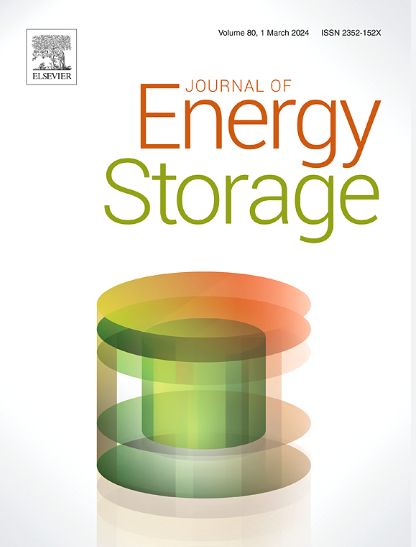Preparation of nanostructured silicon by low-temperature aluminothermic reduction of clay minerals as anode material for high-performance lithium-ion batteries
IF 8.9
2区 工程技术
Q1 ENERGY & FUELS
引用次数: 0
Abstract
Silicon has been widely recognized as one of the most attractive anode candidates in the next generation of lithium-ion batteries due to its excellent theoretical specific capacity, low operating voltage, and extensive sources. Herein, one-dimensional tubular silicon and two-dimensional lamellar silicon with porous structures have been successfully synthesized from low-cost and resource-rich clay minerals (halloysite, kaolin, chlorite and dickite) as raw materials through the low-temperature aluminothermic molten salt reduction process. The results show that the morphology and microstructure of nanostructured silicon depend largely on the morphology and microstructure of its precursor, i.e., one-dimensional tubular silicon from halloysite, two-dimensional lamellar silicon from kaolin, chlorite and dickite. When used as an anode for lithium-ion batteries, one-dimensional tubular Si derived from natural halloysite exhibits superior electrochemical performance, with an initial discharge capacity of 2675 mAh g−1 and an initial coulombic efficiency of 86 %. It yields a high reversible capacity of 1418 mAh g−1 at 0.2 A g−1 after 400 cycles with a capacity retention of 53 %. The voltage and Si![]() Li chemical bond state of elemental silicon during charge and discharge were studied through molecular dynamics and first-principles calculations. It was found that electrons from Li atoms transferred to nearby Si atoms, and with the increase of Li content, the ionic bond properties of Si
Li chemical bond state of elemental silicon during charge and discharge were studied through molecular dynamics and first-principles calculations. It was found that electrons from Li atoms transferred to nearby Si atoms, and with the increase of Li content, the ionic bond properties of Si![]() Li bonds increased, resulting in a decrease in Young's modulus and an increase in tensile fracture. This work provides a facile and cost-effective approach for the preparation of nanostructured silicon from natural clay minerals as high-performance silicon anode materials.
Li bonds increased, resulting in a decrease in Young's modulus and an increase in tensile fracture. This work provides a facile and cost-effective approach for the preparation of nanostructured silicon from natural clay minerals as high-performance silicon anode materials.
低温铝热还原黏土矿物制备纳米硅作为高性能锂离子电池负极材料
硅由于其优异的理论比容量、低的工作电压和广泛的来源,已被广泛认为是下一代锂离子电池中最有吸引力的阳极候选者之一。本文以低成本、资源丰富的粘土矿物(高岭土、高岭土、绿泥石和硅藻土)为原料,通过低温铝热熔盐还原工艺,成功合成了具有多孔结构的一维管状硅和二维片状硅。结果表明,纳米硅的形貌和微观结构在很大程度上取决于其前驱体的形貌和微观结构,即来自高岭土的一维管状硅,来自高岭土、绿泥石和迪克土的二维层状硅。当用作锂离子电池的阳极时,从天然高岭土中提取的一维管状硅具有优异的电化学性能,初始放电容量为2675 mAh g - 1,初始库仑效率为86%。在0.2 a g−1下,经过400次循环后,它产生了1418 mAh g−1的高可逆容量,容量保持率为53%。通过分子动力学和第一性原理计算,研究了单质硅在充放电过程中的电压和硅化学键态。发现来自Li原子的电子转移到附近的Si原子上,随着Li含量的增加,SiLi键的离子键性质增加,导致杨氏模量降低,拉伸断裂增加。本研究为从天然粘土矿物中制备纳米结构硅作为高性能硅负极材料提供了一种简便、经济的方法。
本文章由计算机程序翻译,如有差异,请以英文原文为准。
求助全文
约1分钟内获得全文
求助全文
来源期刊

Journal of energy storage
Energy-Renewable Energy, Sustainability and the Environment
CiteScore
11.80
自引率
24.50%
发文量
2262
审稿时长
69 days
期刊介绍:
Journal of energy storage focusses on all aspects of energy storage, in particular systems integration, electric grid integration, modelling and analysis, novel energy storage technologies, sizing and management strategies, business models for operation of storage systems and energy storage developments worldwide.
 求助内容:
求助内容: 应助结果提醒方式:
应助结果提醒方式:


